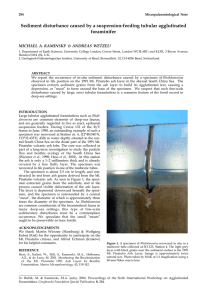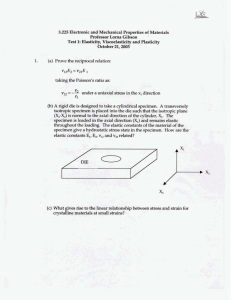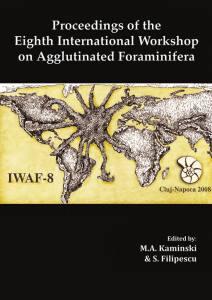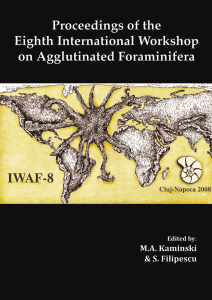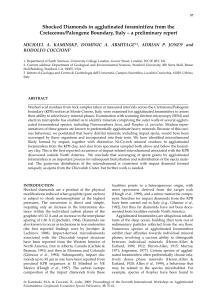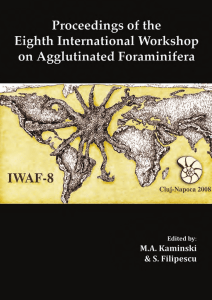Sediment disturbance caused by a suspension-feeding tubular agglutinated foraminifer MICHAEL A. KAMINSKI
advertisement
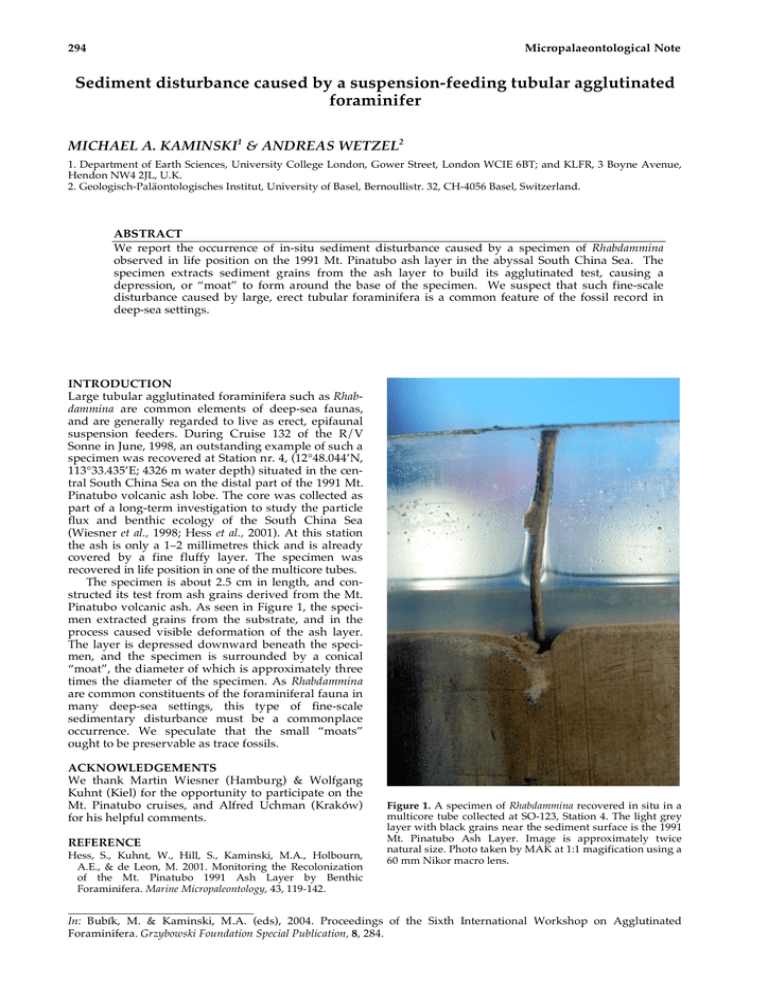
294 Micropalaeontological Note Sediment disturbance caused by a suspension-feeding tubular agglutinated foraminifer MICHAEL A. KAMINSKI1 & ANDREAS WETZEL2 1. Department of Earth Sciences, University College London, Gower Street, London WCIE 6BT; and KLFR, 3 Boyne Avenue, Hendon NW4 2JL, U.K. 2. Geologisch-Paläontologisches Institut, University of Basel, Bernoullistr. 32, CH-4056 Basel, Switzerland. ABSTRACT We report the occurrence of in-situ sediment disturbance caused by a specimen of Rhabdammina observed in life position on the 1991 Mt. Pinatubo ash layer in the abyssal South China Sea. The specimen extracts sediment grains from the ash layer to build its agglutinated test, causing a depression, or “moat” to form around the base of the specimen. We suspect that such fine-scale disturbance caused by large, erect tubular foraminifera is a common feature of the fossil record in deep-sea settings. INTRODUCTION Large tubular agglutinated foraminifera such as Rhabdammina are common elements of deep-sea faunas, and are generally regarded to live as erect, epifaunal suspension feeders. During Cruise 132 of the R/V Sonne in June, 1998, an outstanding example of such a specimen was recovered at Station nr. 4, (12°48.044’N, 113°33.435’E; 4326 m water depth) situated in the central South China Sea on the distal part of the 1991 Mt. Pinatubo volcanic ash lobe. The core was collected as part of a long-term investigation to study the particle flux and benthic ecology of the South China Sea (Wiesner et al., 1998; Hess et al., 2001). At this station the ash is only a 1–2 millimetres thick and is already covered by a fine fluffy layer. The specimen was recovered in life position in one of the multicore tubes. The specimen is about 2.5 cm in length, and constructed its test from ash grains derived from the Mt. Pinatubo volcanic ash. As seen in Figure 1, the specimen extracted grains from the substrate, and in the process caused visible deformation of the ash layer. The layer is depressed downward beneath the specimen, and the specimen is surrounded by a conical “moat”, the diameter of which is approximately three times the diameter of the specimen. As Rhabdammina are common constituents of the foraminiferal fauna in many deep-sea settings, this type of fine-scale sedimentary disturbance must be a commonplace occurrence. We speculate that the small “moats” ought to be preservable as trace fossils. ACKNOWLEDGEMENTS We thank Martin Wiesner (Hamburg) & Wolfgang Kuhnt (Kiel) for the opportunity to participate on the Mt. Pinatubo cruises, and Alfred Uchman (Kraków) for his helpful comments. REFERENCE Hess, S., Kuhnt, W., Hill, S., Kaminski, M.A., Holbourn, A.E., & de Leon, M. 2001. Monitoring the Recolonization of the Mt. Pinatubo 1991 Ash Layer by Benthic Foraminifera. Marine Micropaleontology, 43, 119-142. Figure 1. A specimen of Rhabdammina recovered in situ in a multicore tube collected at SO-123, Station 4. The light grey layer with black grains near the sediment surface is the 1991 Mt. Pinatubo Ash Layer. Image is approximately twice natural size. Photo taken by MAK at 1:1 magification using a 60 mm Nikor macro lens. In: Bubík, M. & Kaminski, M.A. (eds), 2004. Proceedings of the Sixth International Workshop on Agglutinated Foraminifera. Grzybowski Foundation Special Publication, 8, 284. 295 Micropalaeontological Note In: Bubík, M. & Kaminski, M.A. (eds), 2004. Proceedings of the Sixth International Workshop on Agglutinated Foraminifera. Grzybowski Foundation Special Publication, 8, 284.
